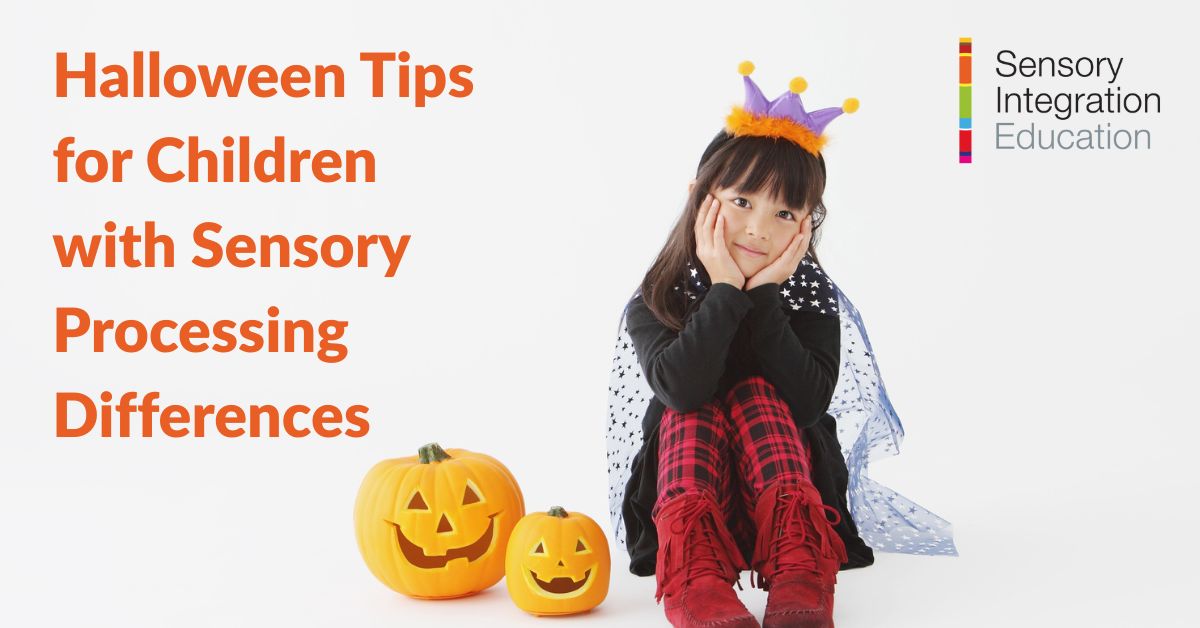Halloween Tips for Children with Sensory Processing Differences
By Dr Lelanie Brewer, 13 October 2025

Challenges children with sensory processing differences may face at Halloween
Whilst costumes are a big part of Halloween to consider, the social side of this celebration can also present significant challenges to neurodivergent children and young people. Halloween can be a sensory overload with loud noises, scratchy costumes and an assortment of smells that are too much for some.
On a practical level, a lack of suitable costumes for those with sensory processing differences can present a barrier for these individuals to participate in Halloween activities. Some children might also find that they are not always invited to participate in Halloween events and it can be a difficult and lonely experience for them.
General tips and practical solutions
If you are celebrating Halloween with your child/children this year, take a look at the tips and suggestions below:
Costumes - If your child is looking for a specific character outfit, bear in mind that Halloween costumes are often made from scratchy fabric, which can be stressful for children who are over-responsive to tactile sensory input. They will be on high alert, increasing the chance of them having a meltdown and not enjoying the celebrations. If your child is insisting on a costume design made from a fabric that isn't comfortable, wearing thermals or a vest underneath the costume can help make it a more pleasant sensory experience for them. Another idea for a sensory-friendly Halloween is to consider adapting an outfit that your child already feels comfortable wearing.
Dealing with picky eaters and food intolerances – A balanced diet is always recommended to avoid the sugar rush on Halloween. If you are hosting a Halloween party, there are some great ideas on sites like Pinterest to include and serve crunchy fruits and vegetables. Besides the sugar rush, this is also a great way to consider the needs of children who may have diabetes or other dietary needs. Chewing on crunchy vegetables is organising for the nervous system!
Decorations - Be mindful that the noise of popping balloons can be distressing for children with sensory processing differences, so having a lot of balloons is not recommended. Consider making some decorations from cardboard or fabric - this could be a good autumn (or half term) activity for children to participate in ahead of Halloween.
Trick or treating - Children with speech and language difficulties (or other sensory processing differences that affect how they communicate) can find trick or treating challenging. Children with communication difficulties can wear lanyards detailing this or can buddy up with friends or siblings. For children who find trick or treating too overwhelming, a small party can be a better alternative. Other things to consider is to go trick or treating with your child and for older children set up a buddy system with a friend that can advocate for them.
Consider children with fine motor difficulties - Include sweets that are easy to open and unwrap and if you are hosting a party, be mindful of activities that require complex motor coordination that would be a barrier for some neurodivergent children.
How can other parents and communities support children with sensory processing differences during Halloween?
Another major consideration to think about when supporting children and young people with sensory processing differences during Halloween is around inclusion and accessibility. If you are hosting a party, don’t exclude children with disabilities and make a point of finding out if they have sensory or access needs to consider. For communities, consider putting on sensory-friendly and accessible Halloween activities.
Happy Halloween everyone!
Dr Lelanie Brewer
Highly Specialist Occupational Therapist, Advanced Sensory Integration Practitioner, PhD, MScOT, BSc, FHEA
PS Why not take a look at our A Day in the Life Of… stories which illustrate how children and young people living with sensory differences can find those differences impacting their day-to-day lives. Find out more here.
Sensory Integration Education is a leading UK provider of postgraduate and CPD training in sensory integration. Our postgraduate courses are accredited by Sheffield Hallam University.

